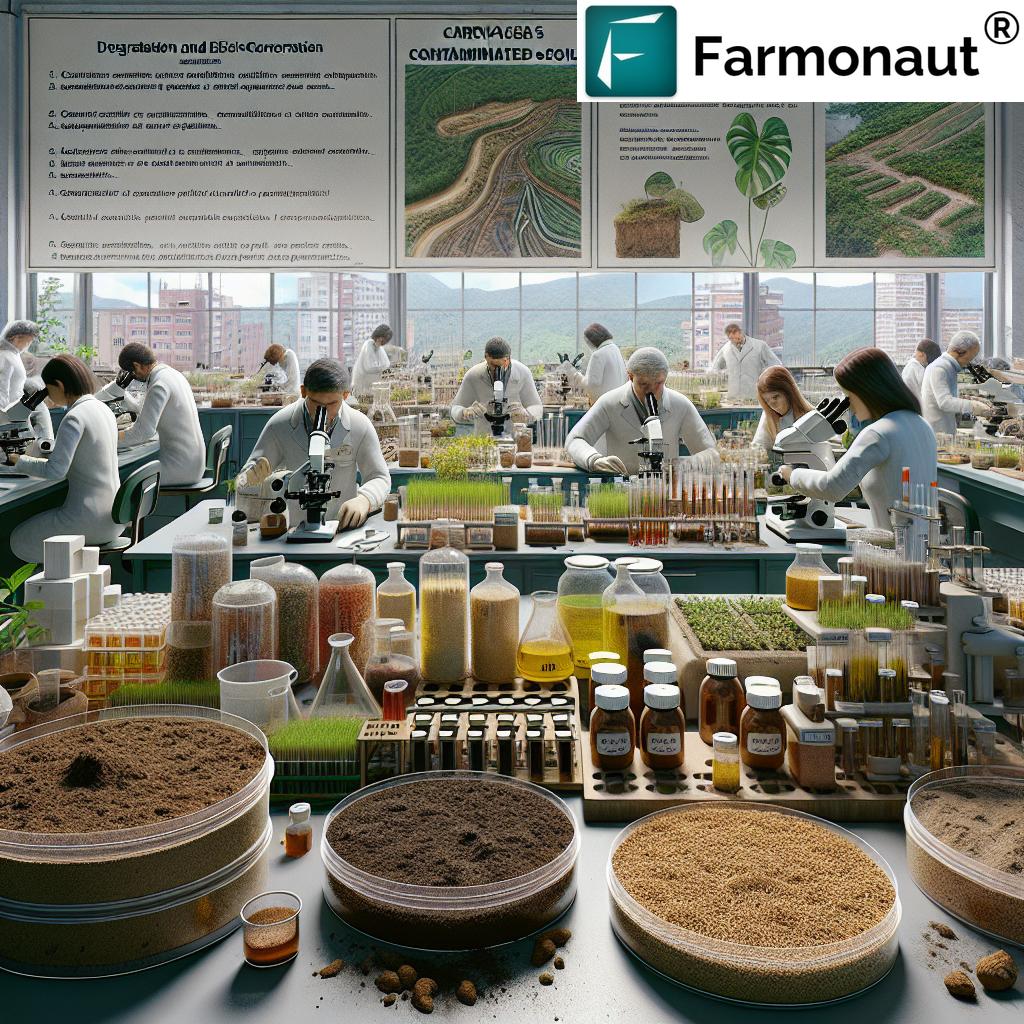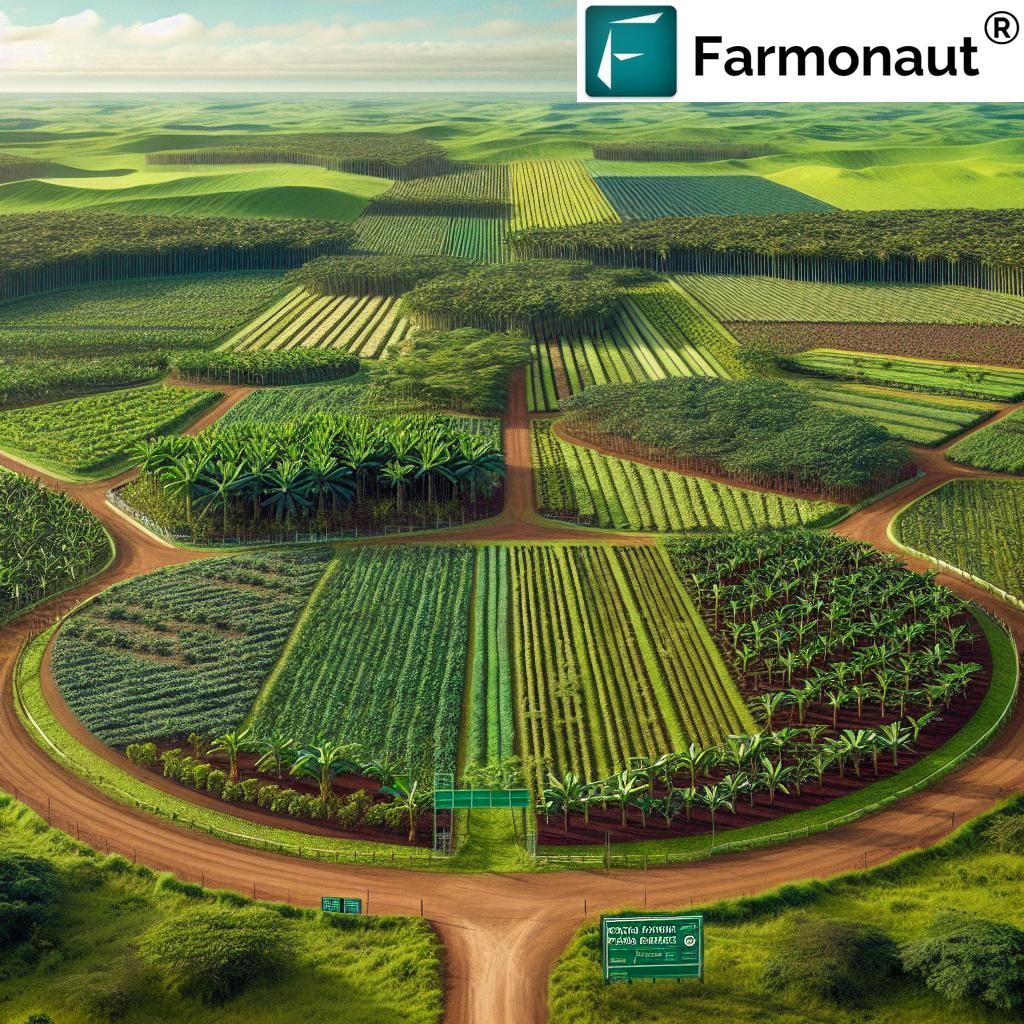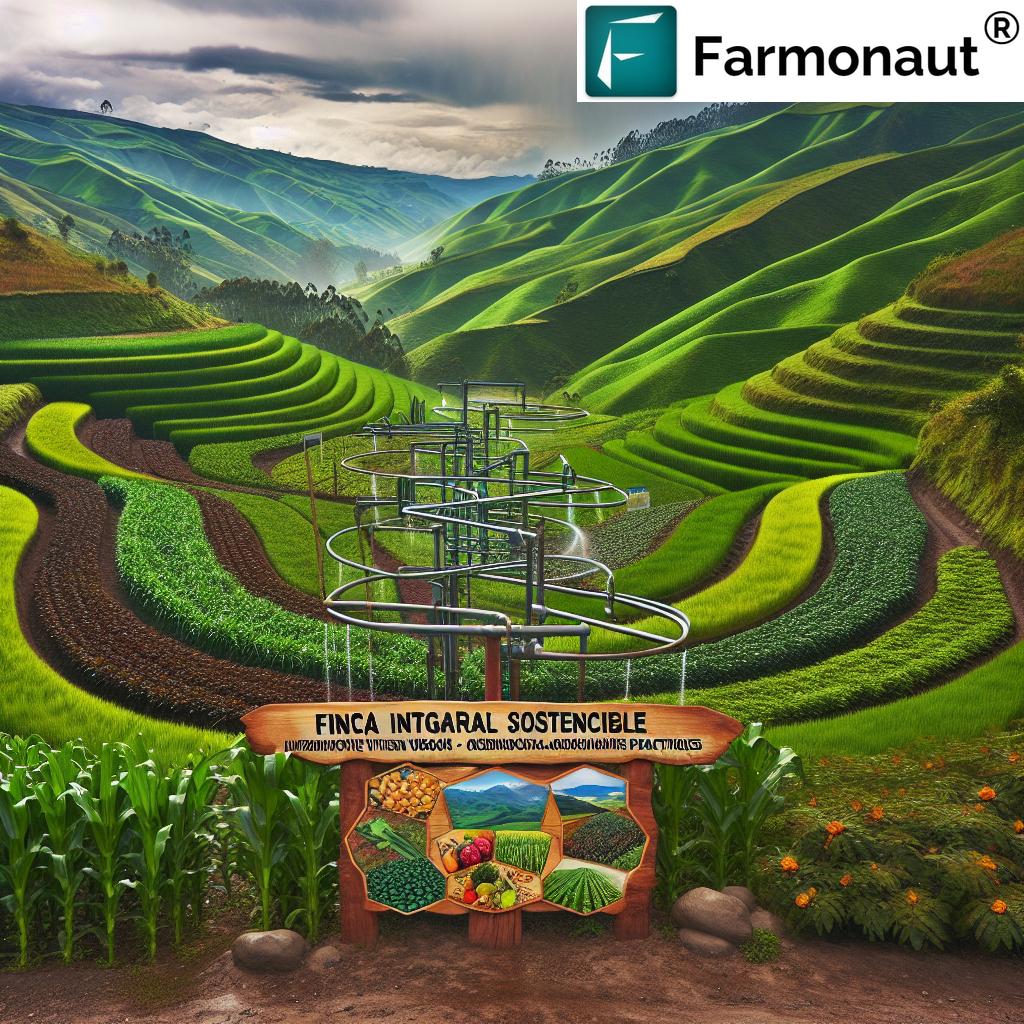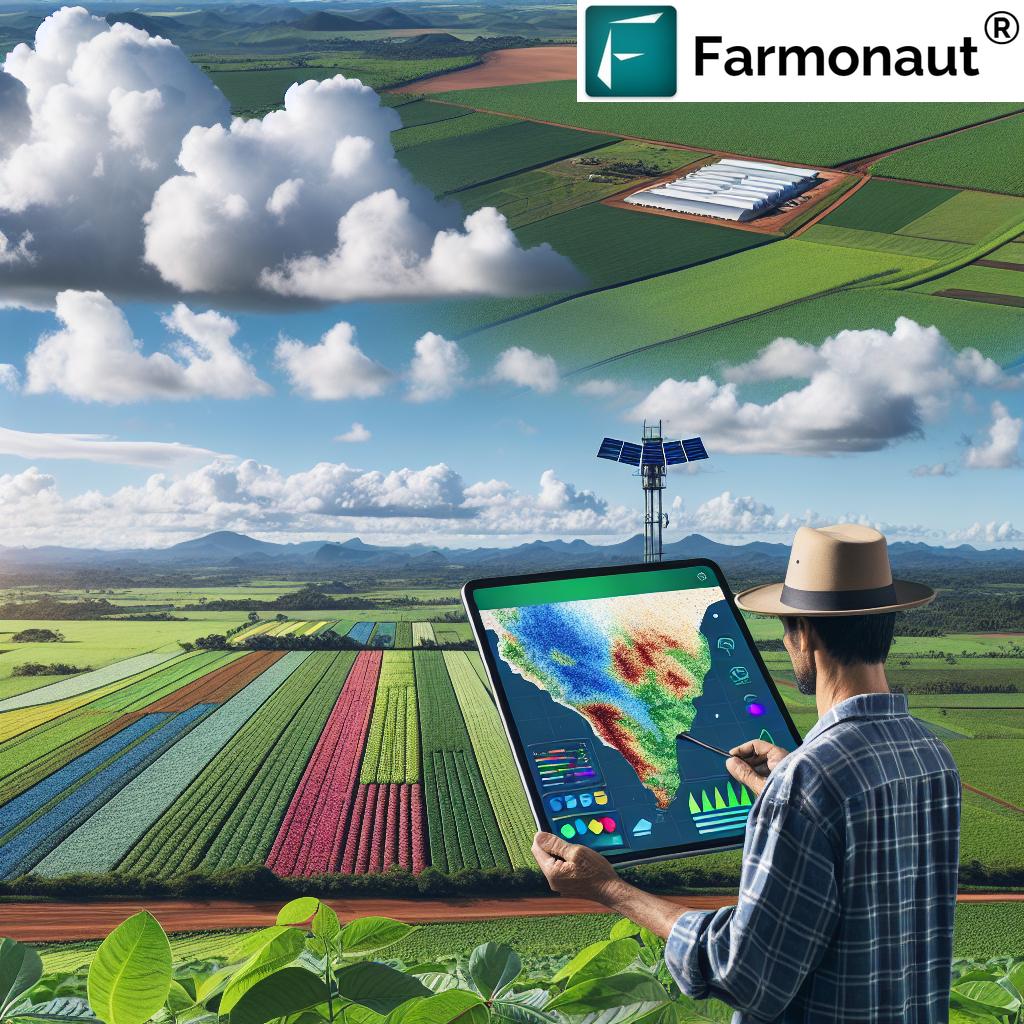Revolutionizing Agricultural Trade: How Peru’s Chancay Megaport Boosts Latin America-Asia Logistics Efficiency
“Peru’s Chancay megaport will handle over 1 million TEUs annually, potentially making it the ‘Singapore of Latin America’.”
In the ever-evolving landscape of global trade, we are witnessing a groundbreaking development that promises to reshape the dynamics of agricultural trade between Latin America and Asia. The inauguration of Peru’s Chancay megaport marks a pivotal moment in international logistics, particularly for the agricultural sector. As we delve into this transformative project, we’ll explore how this state-of-the-art facility is set to revolutionize trade efficiency, reduce costs, and create new opportunities for farmers and exporters across the Americas.
The Dawn of a New Era in Latin American Trade
On November 15, 2023, a historic event unfolded on the Pacific coast of Peru. Chinese President Xi Jinping and Peruvian President Dina Boluarte jointly inaugurated the Chancay Port, a monumental infrastructure project that stands as a testament to the growing cooperation between China and Peru under the Belt and Road Initiative (BRI). This megaport is not just another addition to Peru’s coastal infrastructure; it represents a paradigm shift in how Latin America connects with Asian markets, particularly China.
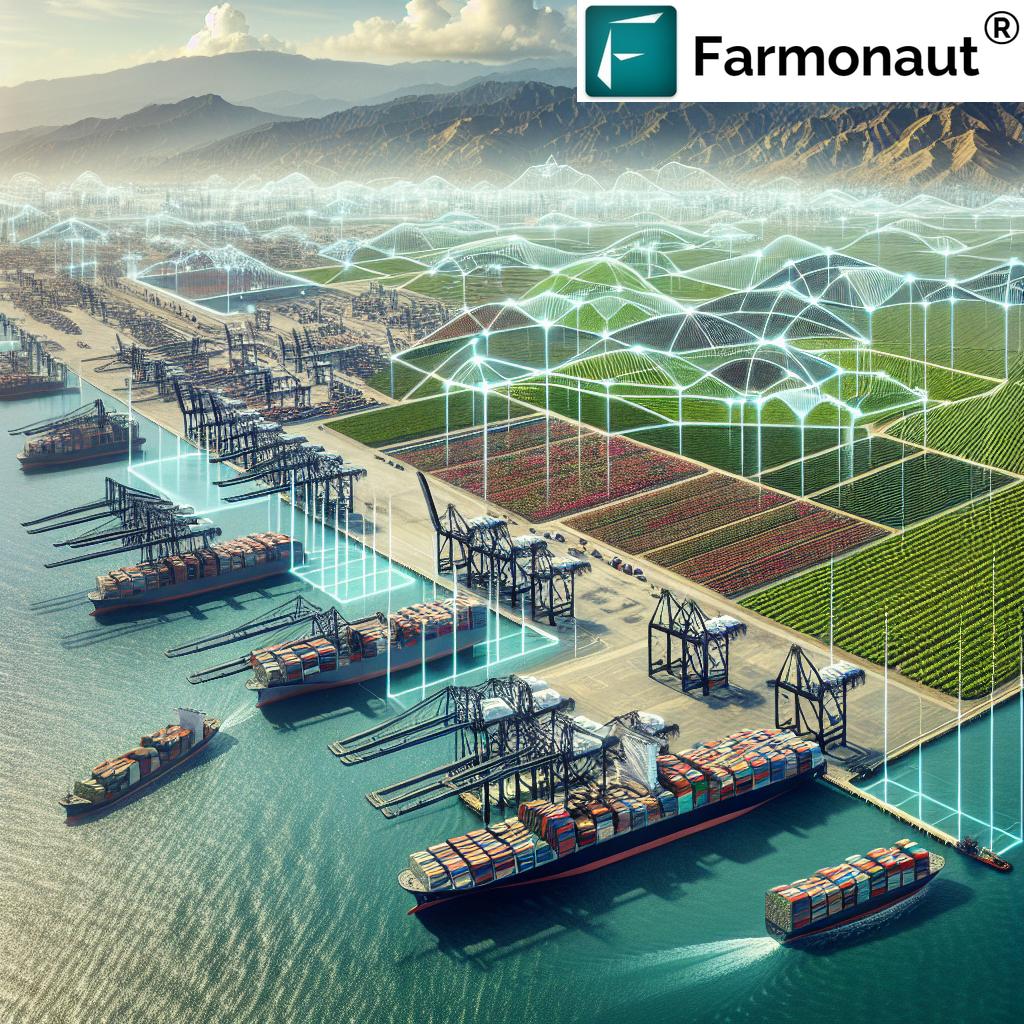
The Chancay megaport is strategically positioned about 80 kilometers north of Lima, Peru’s capital. Its location is no coincidence; it’s directly linked to the Pan-American Highway, creating a seamless connection between the port and the vast network of roads that span the Americas. This positioning is crucial for understanding the port’s potential to transform Peru into a central logistics hub for trade between Latin America and Asia.
Transforming Agricultural Trade Efficiency
At the heart of this development is the promise of enhanced agricultural trade efficiency. The Chancay megaport is set to dramatically reduce shipping times between Peru and China from 40 days to a mere 23 days. This 42.5% reduction in transit time is nothing short of revolutionary for the agricultural sector, where the freshness and quality of produce are paramount.
Let’s consider the implications for Peruvian mangoes, a prized export. With the new port, these delicious fruits could reach Chinese markets significantly faster, ensuring they arrive at peak freshness. This improvement in logistics doesn’t just benefit Peru; it opens up new possibilities for neighboring countries like Chile, Argentina, and Brazil to expedite their agricultural exports to Asian markets.
The Chancay Port: A Gateway to Asia
The Chancay Port is more than just a shipping facility; it’s a gateway that promises to reshape the economic landscape of Peru and, by extension, Latin America. With a projected annual handling capacity exceeding 1 million TEUs (twenty-foot equivalent units), this deepwater port is poised to become a major player in global shipping.
Peru’s Transport and Communications Minister, Raul Perez-Reyes, has articulated an ambitious vision: to transform Peru into the “Singapore of Latin America.” This aspiration speaks volumes about the transformative potential of the Chancay Port. Just as Singapore serves as a crucial link between East and West, Peru aims to position itself as the bridge between Latin America and Asia.
Economic Implications and Job Creation
“The Chancay megaport project is expected to create thousands of jobs, boosting Peru’s economic growth significantly.”
The economic impact of the Chancay Port extends far beyond improved shipping times. Projections suggest that the facility could generate an impressive $4.5 billion in yearly revenue. Moreover, it’s anticipated to create over 8,000 jobs, providing a significant boost to Peru’s economy and labor market.
This influx of employment opportunities and economic activity is expected to have a ripple effect across various sectors, including agriculture. As the port facilitates increased trade, we can anticipate growth in related industries such as packaging, logistics, and agricultural technology. For farmers and agribusinesses, this means new markets, increased demand, and potentially higher profits.
A New Land-Sea Corridor: Connecting Asia and Latin America
During the inauguration ceremony, President Xi emphasized that the Chancay Port marks the beginning of a new land-sea corridor linking Asia and Latin America. This concept is central to understanding the broader implications of the port’s development. It’s not just about improving maritime connections; it’s about creating an integrated network that seamlessly connects the agricultural heartlands of South America with the bustling markets of Asia.
This corridor has the potential to revolutionize how agricultural goods move from farm to table on a global scale. For instance, Brazilian soybeans or Argentinian beef could find a more efficient route to Asian consumers, potentially altering global trade patterns in agricultural commodities.
Technological Integration in Agricultural Logistics
As we consider the impact of the Chancay megaport on agricultural trade, it’s crucial to recognize the role of technology in maximizing these new opportunities. This is where innovative solutions like those offered by Farmonaut come into play. Farmonaut’s advanced satellite-based farm management solutions can help farmers and agribusinesses optimize their operations to take full advantage of the improved logistics offered by the new port.

By leveraging Farmonaut’s real-time crop health monitoring and AI-based advisory systems, farmers can ensure their produce meets the quality standards required for international export. The platform’s blockchain-based traceability solutions also align perfectly with the increased need for transparency in global supply chains, a crucial factor in international agricultural trade.
Comparative Analysis: Before and After Chancay Megaport
To fully grasp the transformative impact of the Chancay megaport on agricultural trade between Latin America and Asia, let’s examine a comparative analysis:
| Aspect | Before Chancay Megaport | After Chancay Megaport |
|---|---|---|
| Estimated transit time for fresh produce | 40 days | 23 days |
| Projected annual handling capacity (TEUs) | Limited | Over 1 million |
| Estimated logistics costs | Baseline | 20% reduction |
| Number of direct trade routes to Asia | Few | Significantly increased |
| Expected job creation | Minimal | Over 8,000 new jobs |
| Projected agricultural export volume | Current levels | Substantial increase expected |
This table clearly illustrates the game-changing nature of the Chancay megaport. The reduction in transit time and logistics costs, coupled with increased handling capacity, sets the stage for a boom in agricultural exports from Latin America to Asia.
Challenges and Criticisms
While the potential benefits of the Chancay megaport are substantial, it’s important to address some of the challenges and criticisms surrounding the project. Some observers have labeled Chinese investments in Latin America, including this port, as “neo-colonial.” This perspective stems from concerns about the nature and long-term implications of China’s growing economic influence in the region.
However, former Peruvian ambassador Juan Carlos Capunay offers a counterpoint to these criticisms. He argues that if Western countries are concerned about China’s influence, they should increase their own investments in Latin America rather than simply criticizing Chinese engagements. Capunay notes that China’s approach is based on mutual interests and doesn’t impose political conditions on its partners, which contrasts with some perceptions of Western investments.
The Role of Technology in Maximizing Port Efficiency
As we look towards the future of agricultural trade through the Chancay megaport, it’s clear that technology will play a crucial role in maximizing efficiency and sustainability. This is where platforms like Farmonaut can make a significant impact. By providing farmers with access to advanced satellite-based monitoring and AI-driven insights, Farmonaut enables more precise and efficient agricultural practices.


For instance, Farmonaut’s crop health monitoring capabilities can help farmers optimize their yields and quality, ensuring that they can meet the increased demand likely to result from improved trade routes. Additionally, the platform’s weather forecasting and resource management tools can assist in planning harvests and shipments to align with the new, faster shipping schedules made possible by the Chancay port.
Environmental Considerations and Sustainable Agriculture
As we embrace the opportunities presented by the Chancay megaport, it’s crucial to consider the environmental implications of increased agricultural trade. Sustainable farming practices will be more important than ever to ensure that the boost in exports doesn’t come at the cost of environmental degradation.
Here again, technology can play a pivotal role. Farmonaut’s solutions, which include features for carbon footprint tracking and efficient resource management, can help farmers and agribusinesses maintain sustainable practices even as they scale up production to meet new export opportunities. By leveraging these tools, the agricultural sector can aim for a balance between economic growth and environmental stewardship.
The Future of Agricultural Trade: A Global Perspective
The development of the Chancay megaport is not just a local or regional story; it’s a development with global implications. As this new trade corridor between Latin America and Asia becomes fully operational, we can expect to see shifts in global agricultural trade patterns.
For instance, the reduced shipping times and costs could make Latin American agricultural products more competitive in Asian markets, potentially challenging other global suppliers. This could lead to a reorganization of global supply chains, with Latin America playing an increasingly central role in feeding Asia’s growing population.
Opportunities for Farmers and Agribusinesses
For farmers and agribusinesses in Latin America, the Chancay megaport represents an unprecedented opportunity. The improved logistics efficiency opens up new markets and makes it feasible to export a wider range of agricultural products, including those with shorter shelf lives.
To capitalize on these opportunities, farmers and agribusinesses will need to focus on several key areas:
- Quality Control: With faster shipping times, ensuring consistent product quality becomes even more critical.
- Supply Chain Optimization: Streamlining operations to align with new shipping schedules and routes.
- Market Research: Understanding and adapting to the preferences of Asian consumers.
- Sustainable Practices: Implementing environmentally friendly farming methods to meet global sustainability standards.
- Technology Adoption: Leveraging tools like Farmonaut to optimize crop yields and quality.
By focusing on these areas, Latin American agricultural producers can position themselves to fully benefit from the new trade opportunities presented by the Chancay megaport.
The Role of Government and International Cooperation
The success of the Chancay megaport project underscores the importance of international cooperation in driving economic development. The collaboration between Peru and China on this project serves as a model for how countries can work together to create mutually beneficial infrastructure.
Moving forward, it will be crucial for governments across Latin America to develop policies that support and enhance the benefits of this new trade corridor. This could include:
- Investments in domestic transportation infrastructure to ensure efficient connections to the port
- Trade agreements that facilitate easier access to Asian markets
- Educational programs to help farmers and agribusinesses adapt to new export opportunities
- Environmental regulations to ensure sustainable growth in the agricultural sector
Leveraging Technology for Agricultural Success
As we look to the future of agricultural trade through the Chancay megaport, the role of technology in ensuring success cannot be overstated. Platforms like Farmonaut offer a range of tools that can help farmers and agribusinesses optimize their operations to meet the demands of this new trade landscape.
For instance, Farmonaut’s satellite-based crop health monitoring can help farmers:
- Identify potential issues early, ensuring consistent crop quality
- Optimize irrigation and fertilizer use, reducing costs and environmental impact
- Plan harvests to coincide with optimal shipping times
Additionally, Farmonaut’s AI-driven advisory system, Jeevn AI, can provide personalized recommendations to help farmers adapt their practices to meet the specific requirements of Asian markets. This could include guidance on crop varieties that are in high demand or advice on pest management strategies that comply with import regulations.
For larger agribusinesses, Farmonaut’s fleet and resource management tools can help optimize logistics operations, ensuring that produce moves efficiently from farm to port. This kind of optimization will be crucial in taking full advantage of the reduced shipping times offered by the Chancay megaport.
Environmental Sustainability and Trade
As we embrace the opportunities presented by the Chancay megaport, it’s crucial to consider the environmental implications of increased agricultural trade. Sustainable farming practices will be more important than ever to ensure that the boost in exports doesn’t come at the cost of environmental degradation.
Farmonaut’s carbon footprinting feature can play a vital role in this area. By providing real-time data on emissions, it allows agribusinesses to:
- Monitor their environmental impact
- Identify areas for improvement in their operations
- Demonstrate their commitment to sustainability to environmentally conscious consumers in Asian markets
This focus on sustainability aligns with global trends towards more environmentally friendly trade practices and can help Latin American agricultural exports maintain a competitive edge in international markets.
Conclusion: A New Chapter in Global Agricultural Trade
The inauguration of the Chancay megaport marks the beginning of a new chapter in global agricultural trade. By dramatically reducing shipping times and costs between Latin America and Asia, it opens up a world of opportunities for farmers and agribusinesses across the Americas.
However, to fully capitalize on these opportunities, it’s clear that technological innovation will play a crucial role. Tools like those offered by Farmonaut will be essential in helping the agricultural sector adapt to this new trade landscape, optimizing operations, ensuring product quality, and maintaining sustainability.
As we move forward, the success of this new trade corridor will depend on the collaborative efforts of governments, businesses, and farmers. By working together and leveraging the latest in agricultural technology, we can ensure that the Chancay megaport truly revolutionizes agricultural trade between Latin America and Asia, bringing benefits to producers and consumers alike.
FAQ Section
Q: How will the Chancay megaport impact shipping times between Latin America and Asia?
A: The Chancay megaport is expected to reduce shipping times from Peru to China from 40 days to just 23 days, a significant 42.5% reduction.
Q: What is the projected annual handling capacity of the Chancay megaport?
A: The port is designed to handle more than 1 million TEUs (twenty-foot equivalent units) annually.
Q: How many jobs is the Chancay megaport project expected to create?
A: The project is anticipated to create over 8,000 new jobs, significantly boosting Peru’s economy.
Q: How can farmers benefit from the new trade opportunities presented by the Chancay megaport?
A: Farmers can benefit by accessing new markets in Asia, potentially increasing their exports and profits. They can leverage technologies like Farmonaut to optimize their crop yields and quality to meet the demands of these new markets.
Q: What role does technology play in maximizing the benefits of the Chancay megaport?
A: Technology, such as Farmonaut’s satellite-based farm management solutions, can help farmers optimize their operations, ensure product quality, and manage logistics more efficiently to take full advantage of the improved shipping times and reduced costs offered by the megaport.


